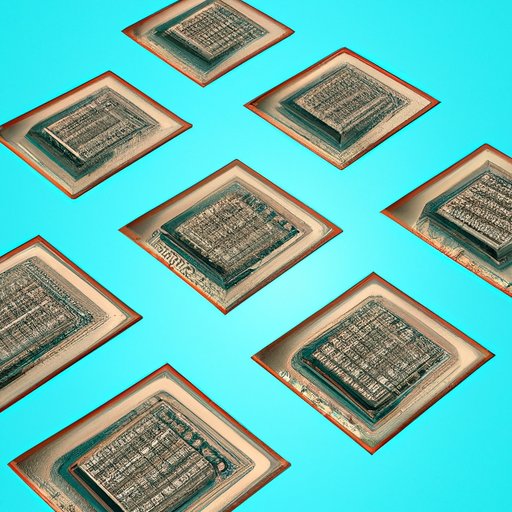Introduction
A computer architecture is the internal structure and design of a computer system. It describes the way in which hardware, software, data, and people interact with each other to form a complete computing system. Understanding computer architecture is important as it provides insight into how computers work, and can help in designing new systems or improving existing ones.

An Overview of Computer Architecture
A computer architecture consists of several components that work together to form a complete system. The components include the Central Processing Unit (CPU), memory, input/output devices, and networking. Each component has its own purpose and function, and they all work together to create a functioning computer system.

Exploring the Components of a Computer Architecture
The Central Processing Unit (CPU) is the primary component of a computer architecture. It is responsible for executing instructions and performing calculations. The CPU can be divided into two parts: the control unit, which controls the flow of information, and the arithmetic logic unit (ALU), which performs calculations and logical operations.
Memory is another important component of a computer architecture. Memory stores information that the CPU needs for calculations and operations. This includes both short-term memory, such as RAM, and long-term memory, such as hard drives and solid state drives.
Input/output devices are the components that allow information to enter and leave the system. These include keyboards, mice, printers, scanners, and monitors. These devices allow information to be entered into the system and output from the system.
Networking is the component that allows computers to communicate with each other. This includes both wired and wireless connections, such as Ethernet and Wi-Fi. Networking allows multiple computers to share information and resources, and to collaborate on projects.
How Computer Architecture Impacts Performance
Computer architecture has a direct impact on the performance of a computer system. The speed and efficiency of a system depend on the components that make up the architecture, as well as how they are configured. For example, a fast CPU and a large amount of RAM will result in faster and more efficient performance than a slower CPU and less RAM. Additionally, a reliable and secure network connection will enable faster data transfer and better security.
What Differentiates Computer Architectures from One Another?
There are several different types of computer architectures, each with its own advantages and disadvantages. Some of the most common types of architectures include Von Neumann, Harvard, and RISC. Each type has its own unique features and considerations for choosing the right architecture for a particular application.
For example, Von Neumann architectures are designed for general-purpose computing, while Harvard architectures are optimized for specialized applications. RISC architectures are designed to reduce energy consumption, while CISC architectures are designed for complex tasks. Additionally, some architectures are more suitable for certain types of applications than others.

The Benefits of Understanding Computer Architecture
Understanding computer architecture can provide several benefits, including improved system performance, greater control over design, and lower costs. By understanding the components of a computer architecture and how they work together, designers can create systems that are optimized for specific tasks or applications. This can lead to faster and more efficient systems, as well as increased reliability and security. Additionally, understanding computer architecture can help to reduce costs by allowing designers to choose components that are best suited for the task at hand.
Conclusion
Computer architecture is the internal structure and design of a computer system. It consists of several components, such as the CPU, memory, input/output devices, and networking, which all work together to form a complete system. Understanding computer architecture can provide several benefits, including improved system performance, greater control over design, and lower costs. Different types of architectures have different advantages and considerations for choosing the right architecture for a particular application.
By understanding computer architecture, designers can create systems that are optimized for specific tasks or applications, leading to faster and more efficient performance. Additionally, understanding computer architecture can help to reduce costs by allowing designers to choose components that are best suited for the task at hand. Overall, understanding computer architecture can be beneficial for anyone looking to design or improve existing systems.
(Note: Is this article not meeting your expectations? Do you have knowledge or insights to share? Unlock new opportunities and expand your reach by joining our authors team. Click Registration to join us and share your expertise with our readers.)
